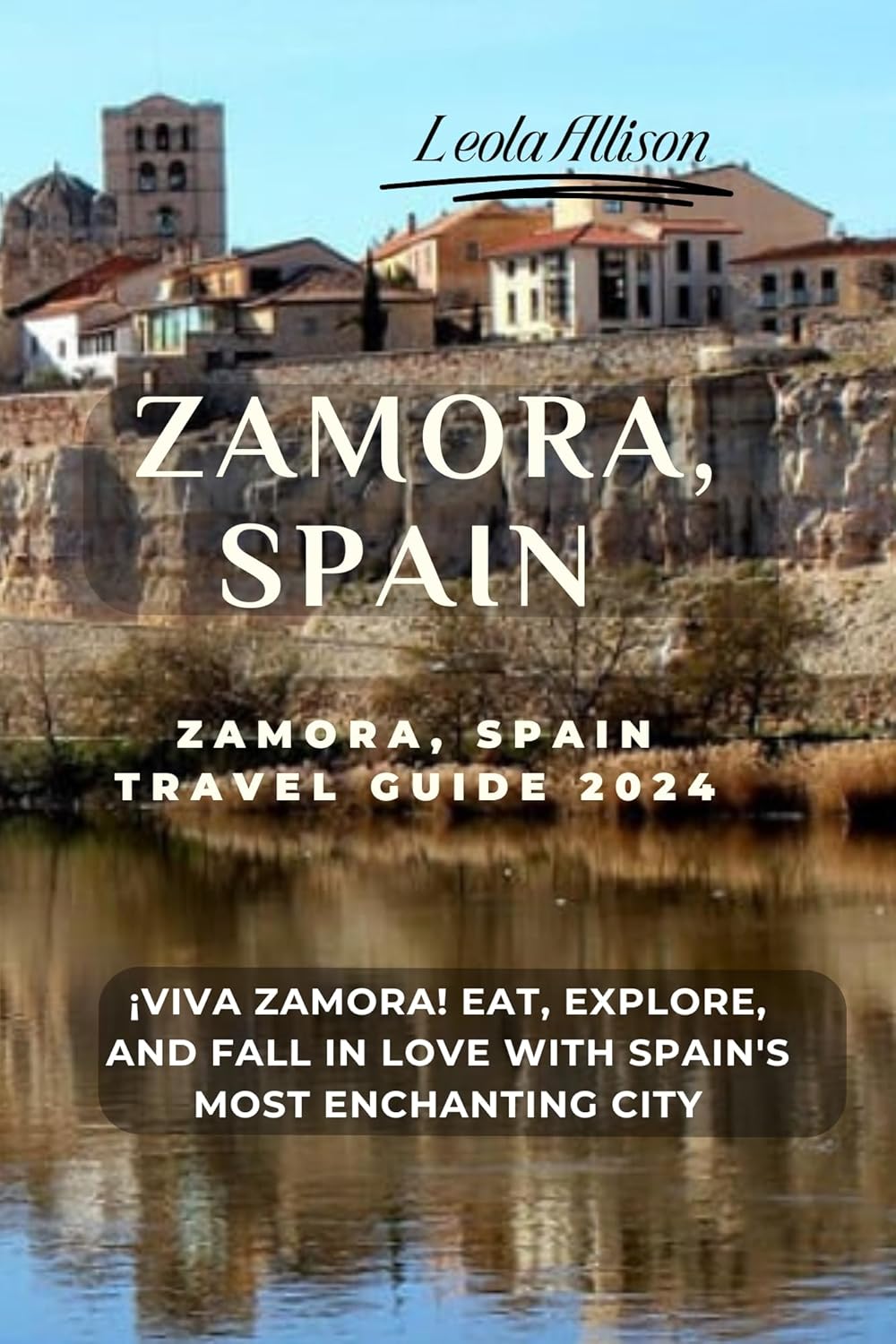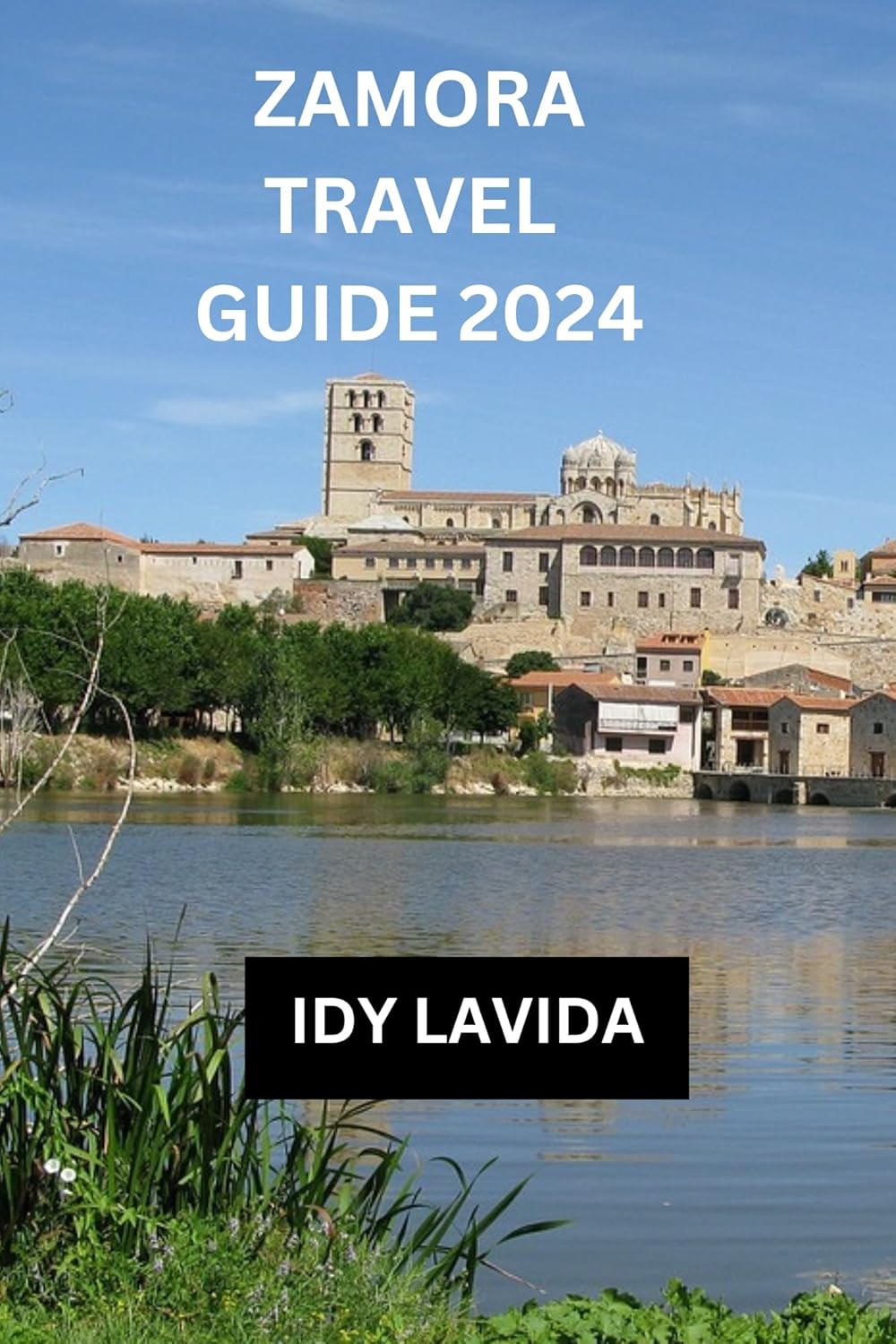Wine enthusiasts with a penchant for travel can follow numerous wine routes in Spain. Such routes introduce you to the typically splendid wines produced in a particular region. Equally important to us, a wine route offers a unique opportunity to become acquainted with the gastronomy, culture, and landscape of that region. Last spring, we embarked on a wine journey through the province of Zamora in the Castile and León region. We followed portions of three particularly fascinating wine routes through stunning landscapes, picturesque villages, and historic towns. Furthermore, we sampled many local specialities and experienced the passion that Spanish winemakers pour into every bottle. Afterwards, we decided to undertake such wine journeys more often. In this blog, you’ll discover why.
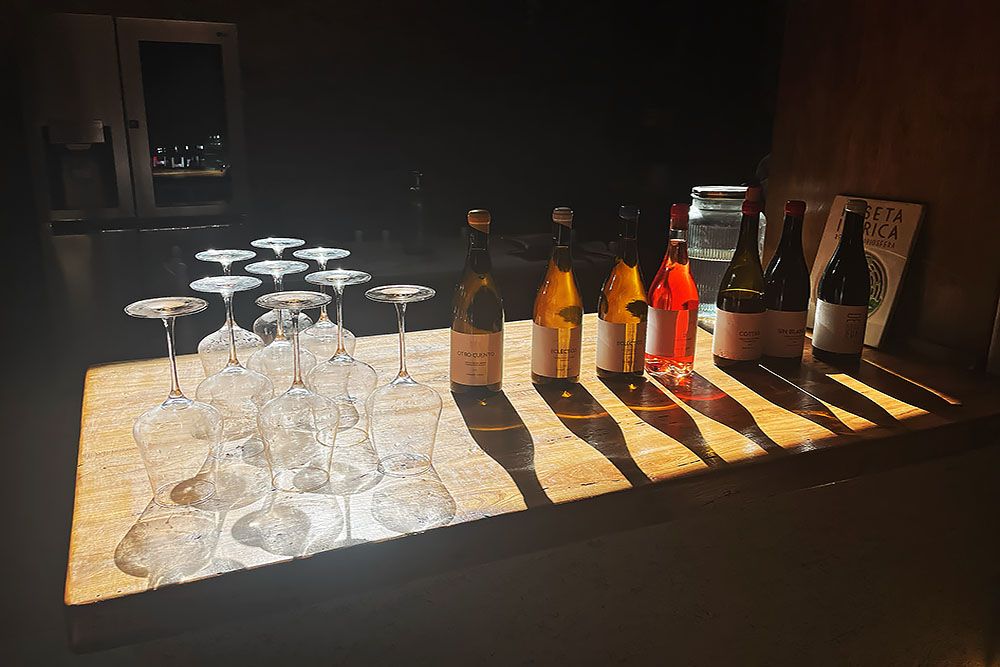
A wine journey in Spanish Zamora
Although we can thoroughly enjoy a delightful glass of Spanish wine, we’re not true wine connoisseurs. Therefore, prior to our wine journey, we delved a bit deeper into Spanish wines, particularly those from Zamora. We learned that Spain’s roots as a wine country trace back to the Phoenicians and Greeks thousands of years BC. The Romans further refined viticulture, leading to large-scale production and even exports. During Moorish rule, winemaking persisted despite religious restrictions.
After the Reconquista, the wine industry flourished anew, with monasteries playing a crucial role in preserving and improving wine techniques. The 19th century brought both challenges (such as phylloxera) and opportunities, with the emergence of modern winemaking techniques. In 1932, Spain introduced the D.O. system (Denominación de Origen) to guarantee the quality and authenticity of Spanish wines. The country now boasts over 60 D.O. regions. Today, Spain, with the largest number of vineyards worldwide, is renowned for its diversity and rich wine tradition. The province of Zamora in the Castile and León region is certainly no exception to this, as we soon discovered.
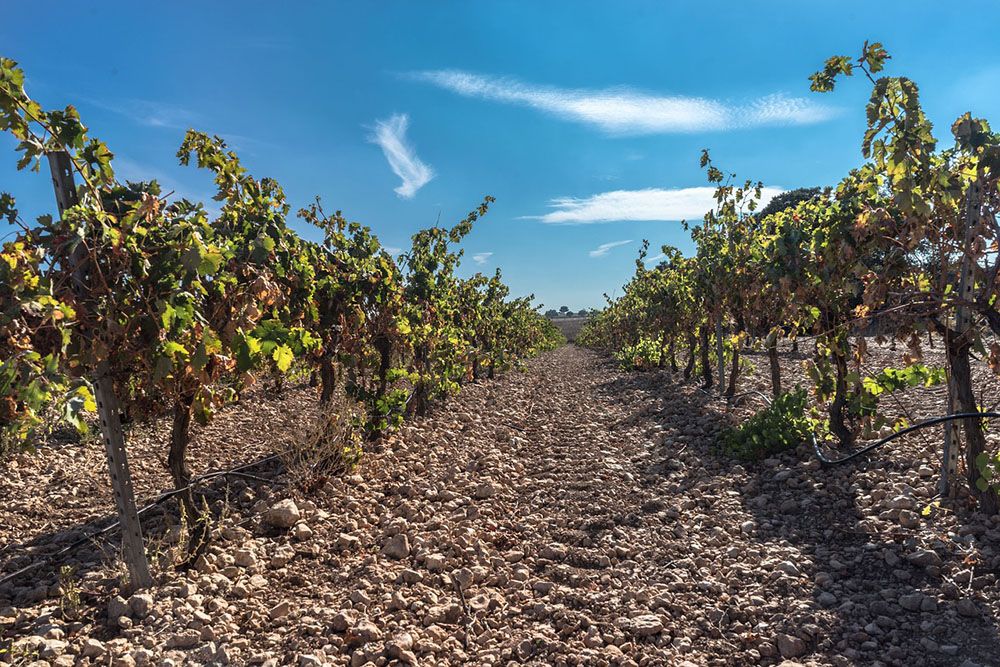
Wine routes in Spain
Spain currently has 37 wine routes. They meander through picturesque landscapes and historic wine regions, from the famous Rioja and Ribera del Duero to lesser-known areas such as Priorat and Rías Baixas. Along the routes, there are numerous opportunities for tours through centuries-old wine cellars and tastings of local wines. But a wine route is about so much more than just wine. The routes not only connect wineries but also reveal the strong bond between wine, gastronomy, and culture in Spain. For this reason, it’s more apt to call them gastronomic wine routes.
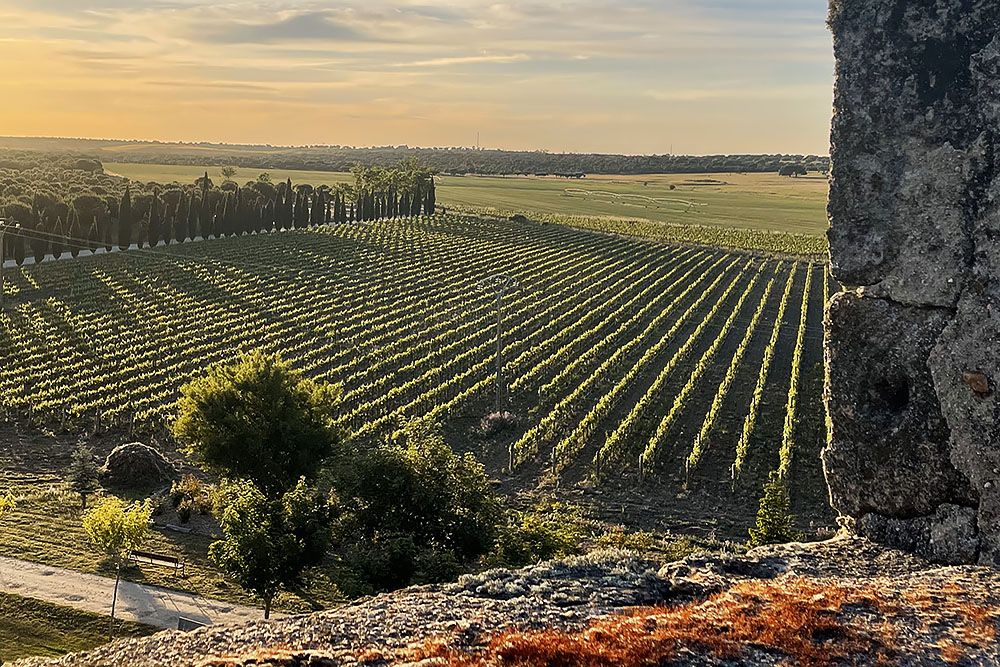
Spanish wine routes in Zamora
During our gastronomic wine journey, we only visit the province of Zamora in northwestern Spain. In this province, you have no fewer than three wine routes that you can follow for not only wine tastings but also cultural and gastronomic experiences:
- Ruta del Vino de Toro. This route concentrates around the town of Toro and its famous wines. Toro is located in the east of Zamora province.
- Ruta del Vino de Zamora. The route encompasses the city of Zamora and its surroundings in the south of the province.
- Ruta del Vino de Arribes. This is located in both Zamora and Salamanca provinces. The route follows the Duero River, which forms the border with Portugal. Here you’ll find a combination of beautiful landscapes and unique wines.
Both Toro and Zamora and Arribes enjoy D.O. status.
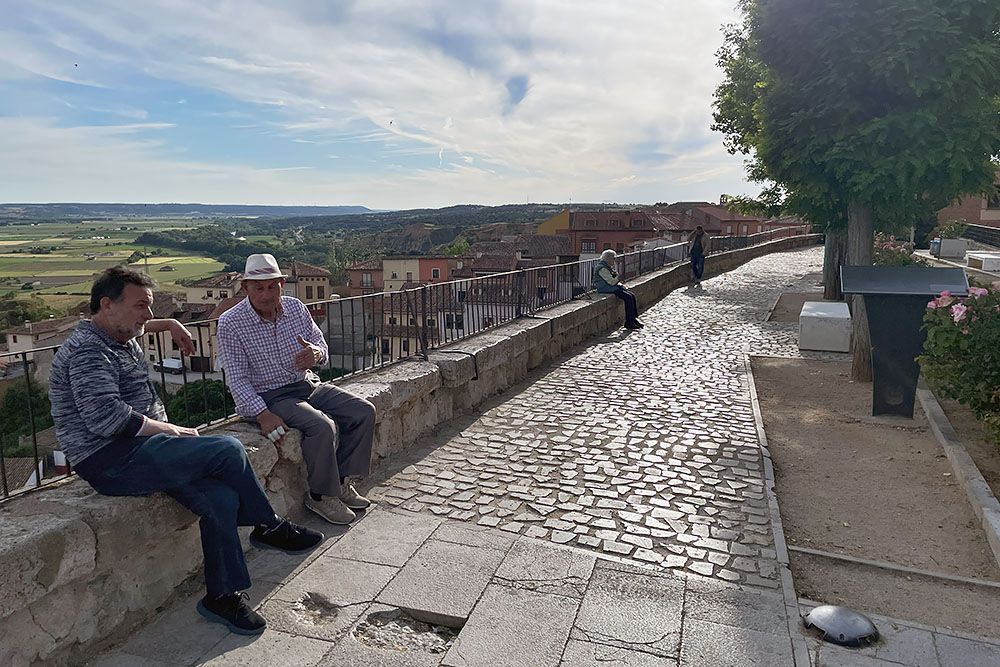
Wine routes in Zamora – Toro
We begin our wine journey in the historic and particularly charming town of Toro. Here, we take a pleasant guided city walk along many interesting sights. The town charms us so much that we’ve published a separate blog about Toro.
The Toro wine route (Ruta del Vino de Toro) then leads us to the Pagos del Rey wine museum in Morales de Toro. We encounter a large area where the fairly young museum is housed in a former wine cooperative from 1964. Here, we first take a tour through the educational vineyard. Besides the most common grape varieties of Toro, we find historical winemaking equipment, such as a beautiful wooden press. Afterwards, we go inside where we delve into the old wine cellars and are impressed by the original 28 concrete fermentation tanks. Enriched with a more complete picture of the region’s viticulture and wine history, we conclude the tour in style with a delightful glass of red wine and some accompanying snacks.
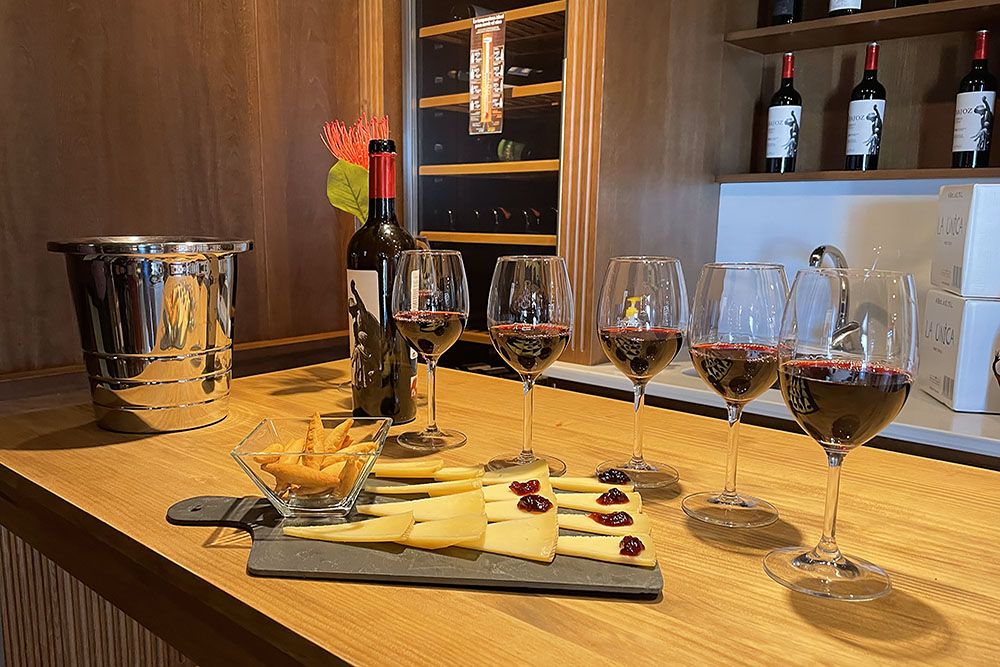
Of course, we also visit a winery on the Toro wine route. For this, we end up at Bodega Fariña, an iconic winery in the heart of the Toro region and one of the founders of the DO Toro. This family business has developed over more than 80 years since its establishment into a leading producer of powerful, characterful wines. With their dedication to the local Tinta de Toro grape (local name for the Tempranillo grape) and innovative winemaking techniques, Salvador Fariña creates wines that capture the essence of the terroir. After the interesting tour, a small wine tasting naturally follows. The rich flavours and complex aromas of the presented wines enchant our taste buds.
|
Fun fact: each year, the primeur wine receives a new artistic label designed by the winning artist. |
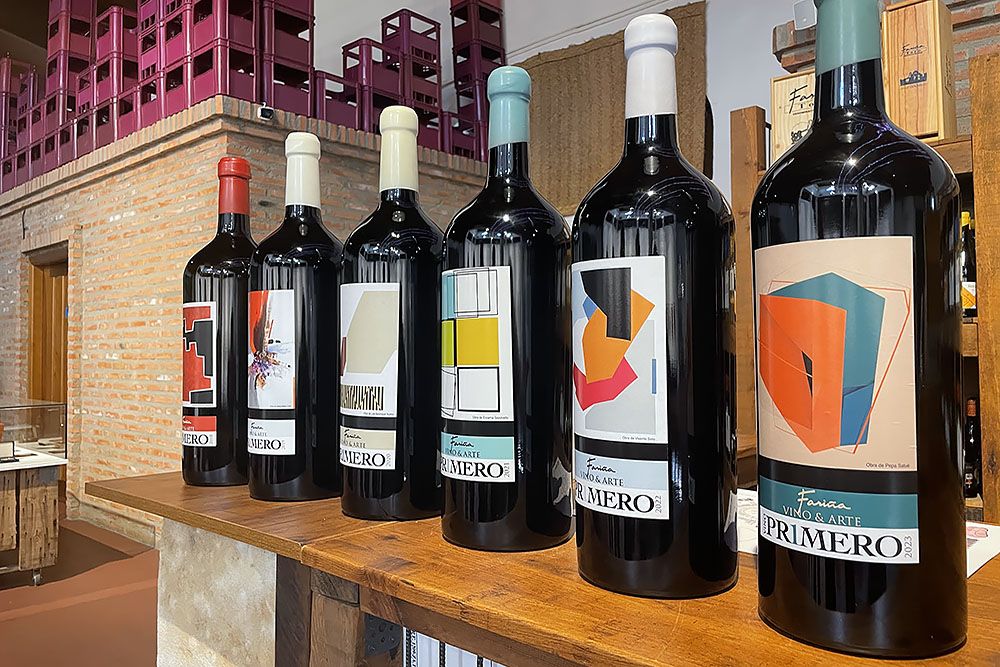
Other wineries to visit around Toro
We visited one of the oldest family businesses and perhaps the most iconic winery on the Toro wine route. But besides bodega Fariña, there are of course more wineries worth visiting. Some other renowned bodegas along the route are:
- Bodega Numanthia: known for their premium wines and modern winemaking techniques.
- Bodega Pintia (Vega Sicilia): a prestigious winery that combines Toro tradition with innovation.
- Bodega Rejadorada: located in a 14th-century palace in the centre of Toro.
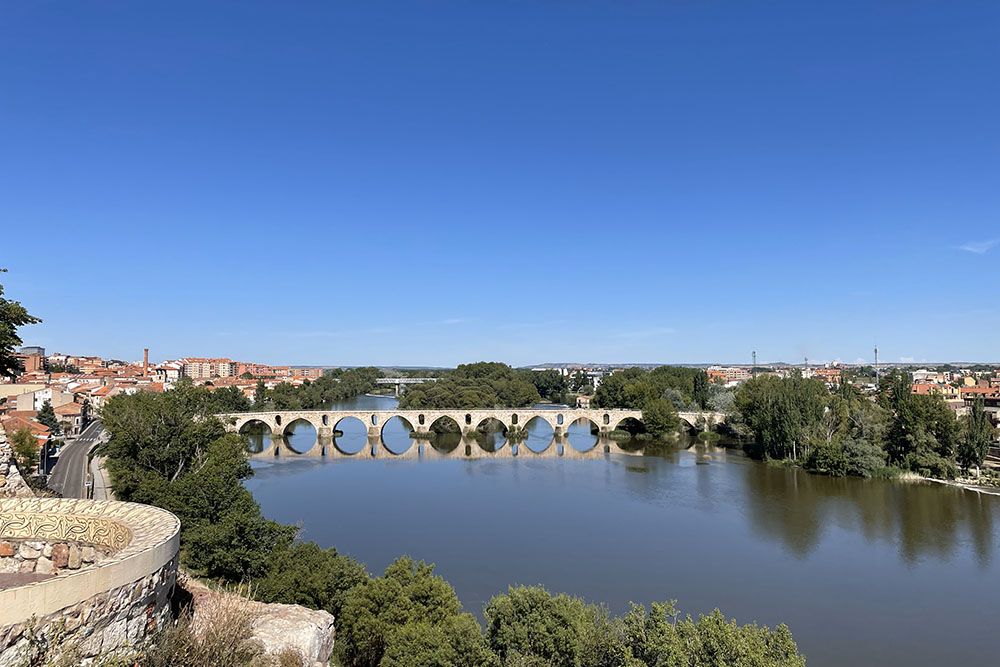
Wine routes in Zamora – Around the town of Zamora
We leave the D.O. Toro and enter Zamora, the Spanish capital of Romanesque architecture. In this particularly picturesque city, we also take a guided walk. The guide leads us through the city’s scenic streets past many 12th and 13th-century churches, cathedrals, and public buildings. They have the characteristic Romanesque style of thick stone walls, round arches, and detailed woodwork. Magnificent! We also visit a beautiful viewpoint where we see the Duero, the lifeblood of the numerous vineyards in the area, meandering. A lovely spot in the city where we’d like to linger longer, but the next winery on the wine route is already presenting itself.
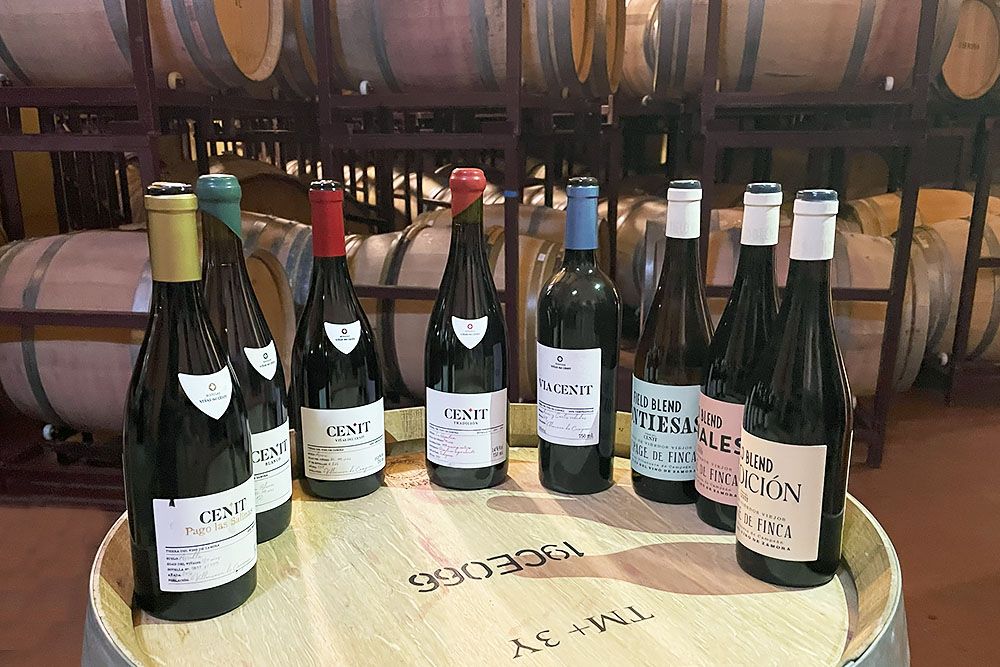
The first winery we visit on this beautifully sunny day is Bodega Viñas del Cenit, located just south of Zamora city. Here we meet winemaker José Manuel Benéitez, who also has a bodega in Arribes with his wife. José tells us that Viñas del Cenit is a modern winery that distinguishes itself through its dedication to old vines and sustainable viticulture. They use grapes from pre-phylloxera vineyards. Some of the vines are even older than 150 years! Their portfolio includes powerful red wines, mainly made from the Tinta de Toro grape. But José also produces white wines made from grape varieties such as dona blanca, albillo, palomino, and godello.
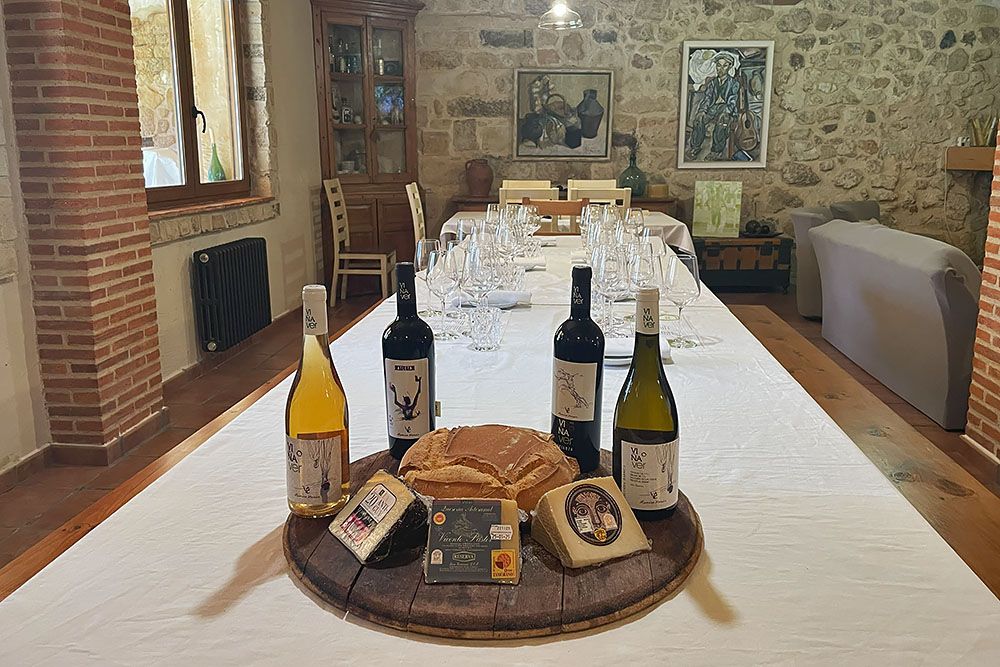
Another winery we visit on the Zamora wine route is Bodega Viña Ver. The bodega is an up-and-coming relatively young, small winery that is breathing new life into the region’s rich wine tradition. Viña Ver was founded by Ramiro Morán and his wife Cristina Cacho López. They focus on producing characterful wines that reflect the unique terroir of Zamora. In the wine cellar beneath the family home, we taste several barrel samples of both red and white wines. Back in the living room, we are presented with an extensive wine tasting accompanied by delicious, matching cheeses and cured meats. Delightful!
|
Fun fact: In 1992, Ramiro participated as an athlete in the Olympic Games in Barcelona. Some of their wines bear the name Atleta with an athlete incorporated into the label. |
Other wineries to visit around Zamora
Besides the wineries we visited, Viñas del Cenit and Viña Ver, the following bodegas along the route are also certainly worth a visit:
- Bodegas Senorio de Bocos: known for their Verdejo wines, a typical grape variety for this region.
- Bodegas Cooperative El Soto: this cooperative produces, among others, the ‘Proclama’ Malvasia, an interesting white wine for lovers of this grape variety.
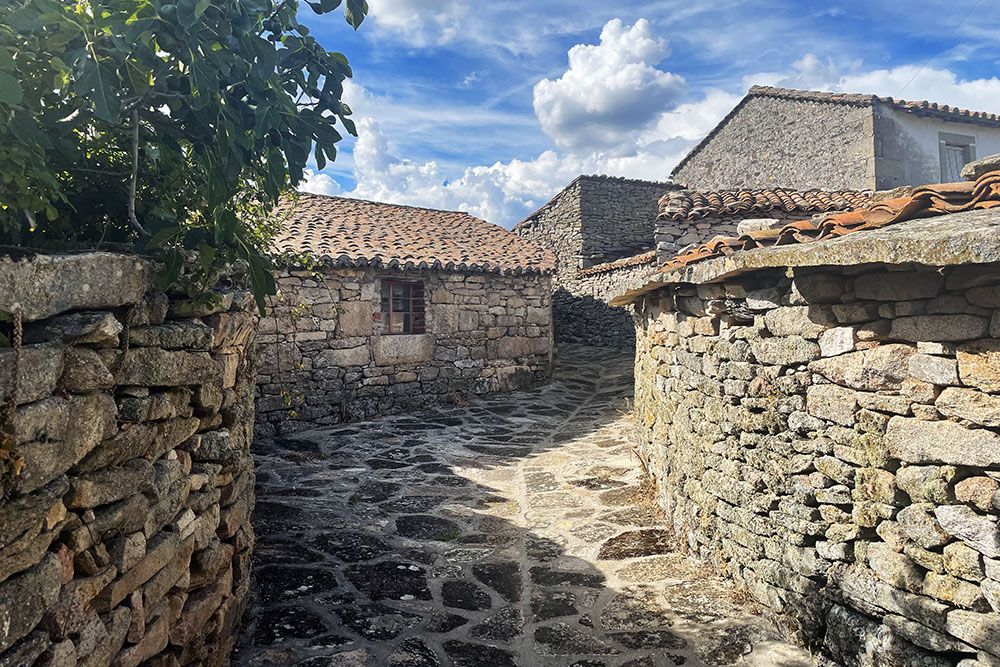
Wine routes in Zamora – Arribes
We conclude our wine journey with the Arribes wine route: a fascinating wine route that stretches along the spectacular cliffs of the Arribes del Duero nature park, on the border of Spain and Portugal. The route offers a unique combination of breathtaking landscapes, picturesque villages, centuries-old winemaking traditions, and a range of local grape varieties found nowhere else in the world. Winemaking in this area is often small-scale as a family business, with a focus on quality over quantity. Many vineyards are still worked in the traditional way, contributing to the authentic character of the wines.
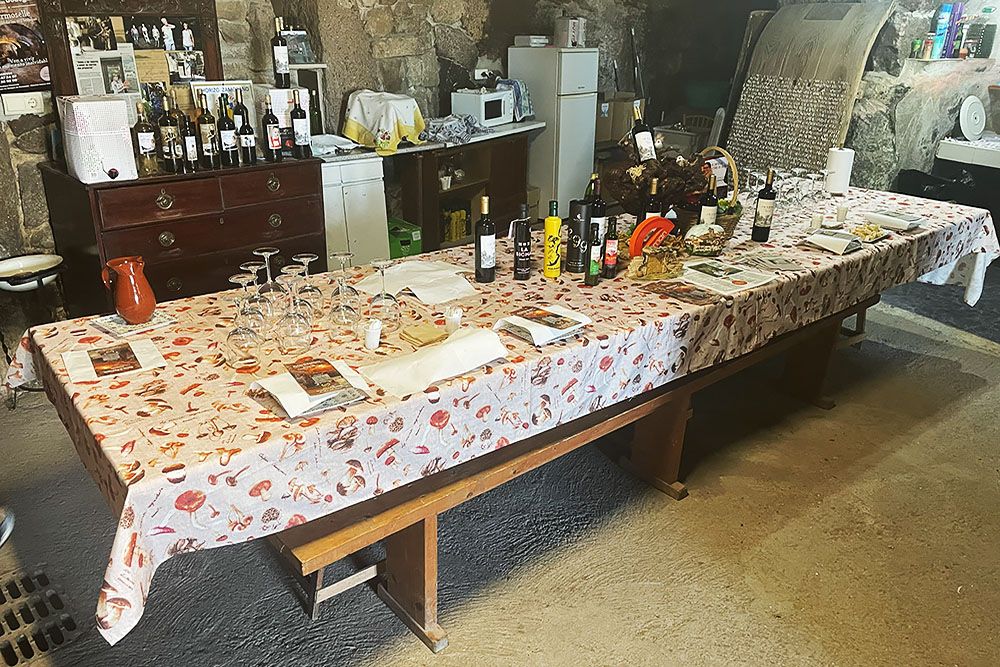
The charming Fermoselle is our base in Arribes del Duero, where we stay for two nights. Fermoselle is known as the “Balcony of the Arribes” due to its spectacular location on a hill overlooking the ravines of the Duero and Tormes rivers. This historic village with its narrow, steep streets and traditional architecture is famous for its winemaking tradition with numerous underground wine cellars. During a walk through the long underground tunnel system, we get to see several of them. Very interesting, but we’re still glad to see daylight again after half an hour.
Later in the afternoon, we visit bodega El Hato y el Garabato, owned by winemaker José (whom we met earlier at Viñas del Cenit), and his wife Liliane. The couple runs a unique, small-scale winery focused on producing organic wines with local, often rare grape varieties such as Juan Garcia, Doña Blanca, and Tinta Jeromo. The bodega manages 8 hectares of old vineyards, some up to 120 years old, and is housed in a restored farmhouse. Their philosophy includes minimal intervention and respect for tradition, combined with innovation. José and Liliane have genuine passion for their craft. And we taste that immediately as we sip the wines they specially open for our last wine tasting of the wine journey.
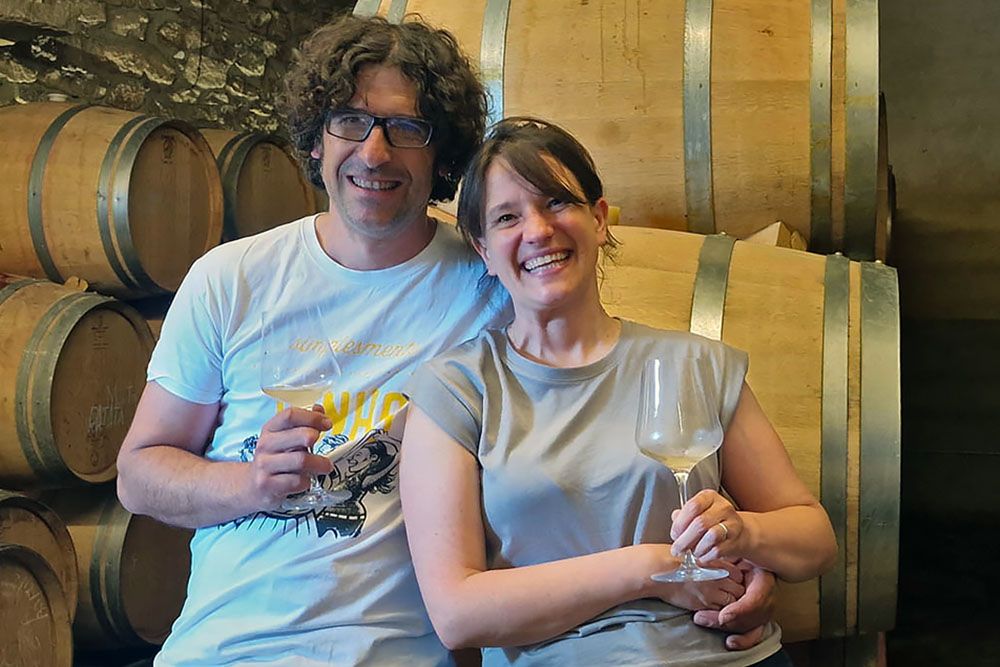
Other wineries to visit in D.O. Arribes
Besides bodega El Hato y el Garabato, also visit one or more of the following bodegas:
- Bodega Ribera de Pelazas: a family business that combines traditional methods with modern technology
- Bodegas Arribes del Duero: known for their ecological wines
- Hacienda Zorita Natural Reserve: a wine and nature resort that offers a complete Arribes experience.
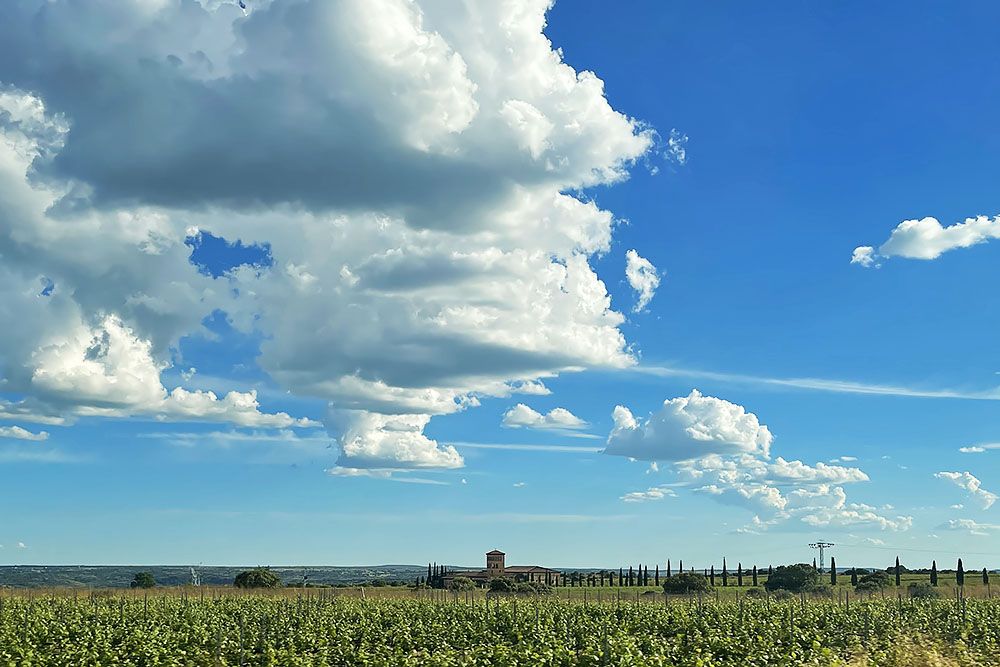
Natural Park of Arribes del Duero
Fermoselle is also our base for excursions to, among other places, the stunning natural park of Arribes del Duero. In this nature park, we take a walk along incredibly beautiful viewpoints. We also enjoy an impressively beautiful boat trip through the magnificent, natural environment of the Duero. We’ll elaborate on this in a separate blog soon.
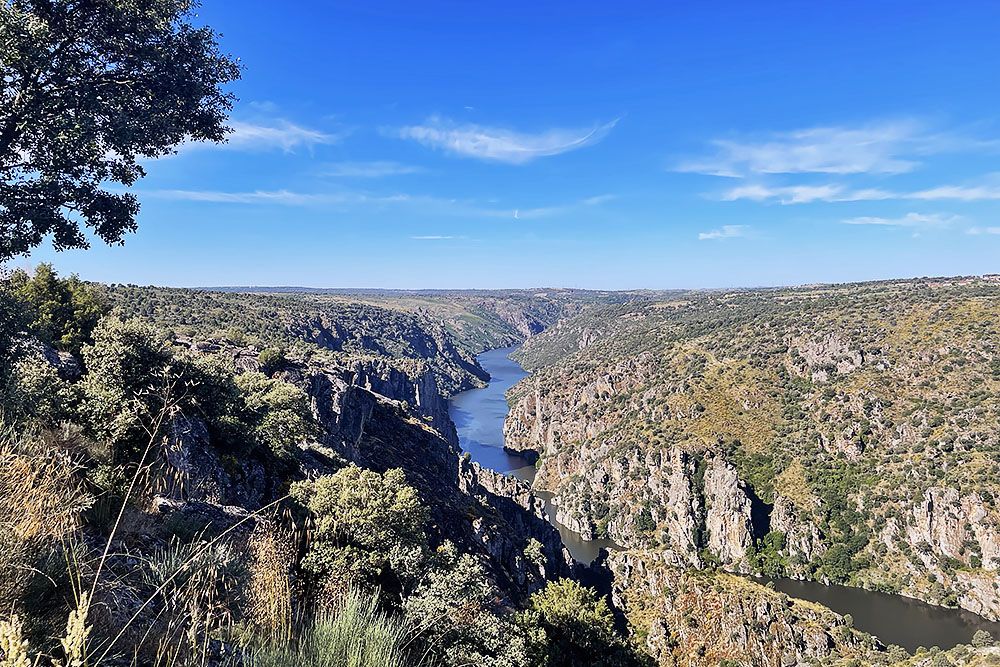
Gastronomic experiences in Zamora province
The wine routes of Toro, Zamora and Arribes offer more than just wine tastings and winery visits. You can experience numerous culinary adventures, often bundled in attractive packages. For instance, the website of the Zamora wine route offers several delectable arrangements.
A popular option is ‘A day in the Land of Wine’, which we also experienced ourselves. Apart from a stop at a winery, our gastronomic excursion included visits to, among others, the Coomonte brothers. Here we learned to bake so-called Aceitadas: small, round, delicious biscuits that are especially eaten in Zamora during Easter. We also discovered the secrets of cheese production at Quesería La Antigua. Interesting in itself, but due to the noise in the factory, the guide is barely audible. The package naturally includes a delightful lunch as well.
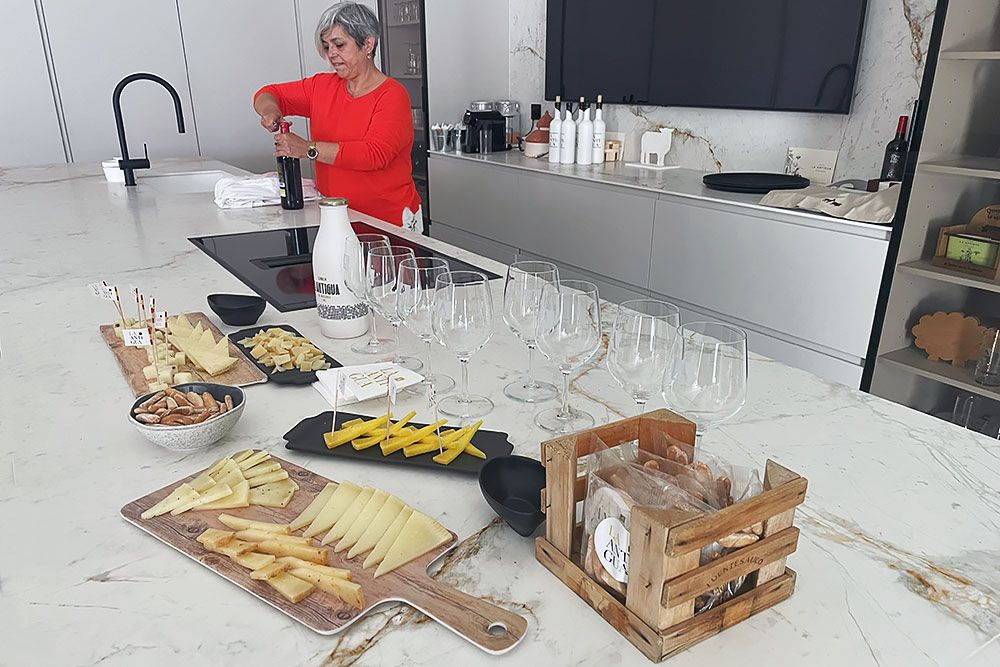
Outside of these packages, you can book even more gastronomic excursions. For example, there’s the opportunity to make your own chocolate during a workshop at Refart Chocolate in Zamora. Very exciting to see! Do brush up on your Spanish though, as when we were there, the explanation of the chocolate-making process was in Spanish.
You can also book gastronomic experiences along the Arribes wine route. For instance, at Mermeladeria Oh Saúco in Fornillos de Fermoselle, you can try many types of jam. Owner Teresa Cotorruelo crafts up to 40 varieties of jam per year in an artisanal way! You eat the jam on some cheese or bread. Certainly a nice souvenir to take home!
Furthermore, in Arribes, we visit a newly opened olive oil museum. The museum is a sort of tribute to DourOliva, the award-winning olive oil produced in this area. We experience that this is truly good olive oil at Restaurante España. Here we enjoy a particularly flavoursome lunch and excellent olive oil!
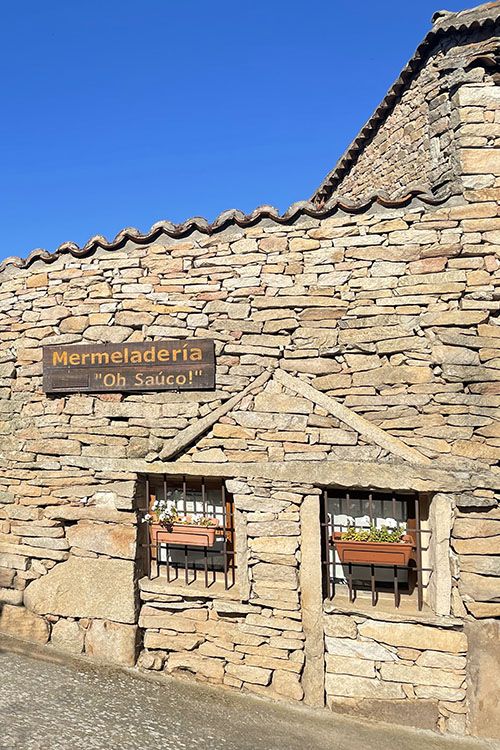
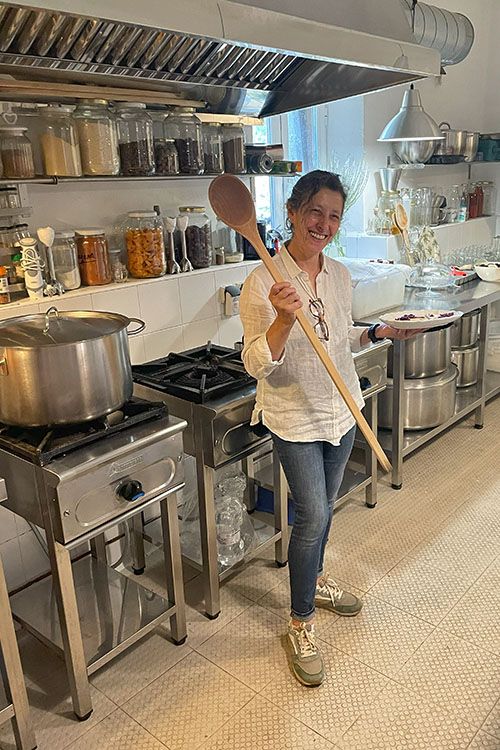
Practical questions about the wine routes in Zamora
The province of Zamora is situated in the northwest of Spain, in the autonomous region of Castile and León. The provincial capital is also called Zamora. This city is located on the banks of the Duero River, close to the border with Portugal. Zamora is about 100 kilometres west of the city of Salamanca.
The most efficient way to get to Zamora is by flying to Madrid and then taking the high-speed train (AVE) to the city of Zamora. The train journey takes only an hour and twenty minutes. This offers a good balance between speed and comfort. At the train station in the city of Zamora, you can easily hire a car. You'll need this to follow one or more wine routes.
In our opinion, the best seasons for a wine trip in Zamora are spring (April through June) and autumn (September and October). You'll have lower temperatures and less crowds than in summer.
Would you like to experience a special wine event in Zamora? The Feria del Vino de Toro is usually held on the last weekend of May. This prestigious wine event takes place in the historic city of Toro. Local wineries present their best wines, with a focus on the powerful red wines made from the Tinta de Toro grape. In addition to wine tastings, you can also enjoy gastronomic specialities, cultural activities and musical performances. The Feria is not only a celebration of the local wine culture but also an important promotion for the Denominación de Origen (D.O.) Toro, which enjoys worldwide recognition for its high-quality wines.
In October, the Fiesta de la Vendimia takes place in Toro. This colourful and lively wine harvest festival celebrates the rich wine tradition of the region and marks the beginning of the grape harvest. You can enjoy traditional folkloric performances, wine tastings from local bodegas, and culinary delights with regional specialities. Highlights often include the grape pressing ceremony on the central square and the blessing of the new harvest.
As you explore the wine routes in the province of Zamora, there are several excellent options for delightful dining. Here are some recommendations.
In Toro:
- Restaurante La Esquina de Colás: This restaurant is known for its traditional Spanish dishes with a modern twist. They use local ingredients and offer an extensive wine list featuring wines from the region.
- Mesón Zamora: A cosy spot where you can enjoy authentic Castilian dishes. It's a popular choice for both locals and tourists.
- Bar La Colegiata is a popular restaurant in Toro, known for its authentic Spanish cuisine and extensive wine list featuring a selection of fine wines from the Toro region.
- Other good restaurants in Zamora
In Zamora:
- La Abacería. This restaurant offers a selection of local dishes and wines from the region surrounding Zamora.
- Ágape: A popular spot for tasting various tapas in a convivial atmosphere.
- La Oronja Bar & Restaurant. This restaurant offers an elegant setting and a menu featuring local ingredients. It's a splendid place for a special lunch or dinner.
- Other good restaurants in Zamora
In Fermoselle:
- Restaurante España: This renowned restaurant offers a refined culinary experience with a menu that captures the essence of local cuisine. They are known for their innovative interpretations of traditional Zamora dishes, prepared with fresh ingredients from the area. Their wine list showcases an impressive selection of Arribes wines.
- La Enoteca del Marques, situated in a historic building but also featuring a terrace with a beautiful view, this restaurant combines elegance with rustic charm. They specialise in seasonal dishes that reflect the flavours of Fermoselle and the surrounding region. Their extensive wine cellar houses a collection of both local and international wines, perfectly paired with their menu.
- Other good restaurants in Fermoselle.
Along the wine routes, you can also enjoy local delicacies such as:
- Artichoke stew
- Cheese platters with local cheeses from Zamora
- Aceitadas, a local pastry that you can buy at a Panadería (bakery), such as Panaderia Hermanos Coomonte
- Homemade jams from Mermeladeria Oh Saúco in Fornillos de Fermoselle
- DourOliva, award-winning olive oil in La Villa de Fermoselle
Don't forget to combine these culinary experiences with wine tastings at local bodegas. This combination of local dishes and wines gives you an authentic taste of the Zamora region.
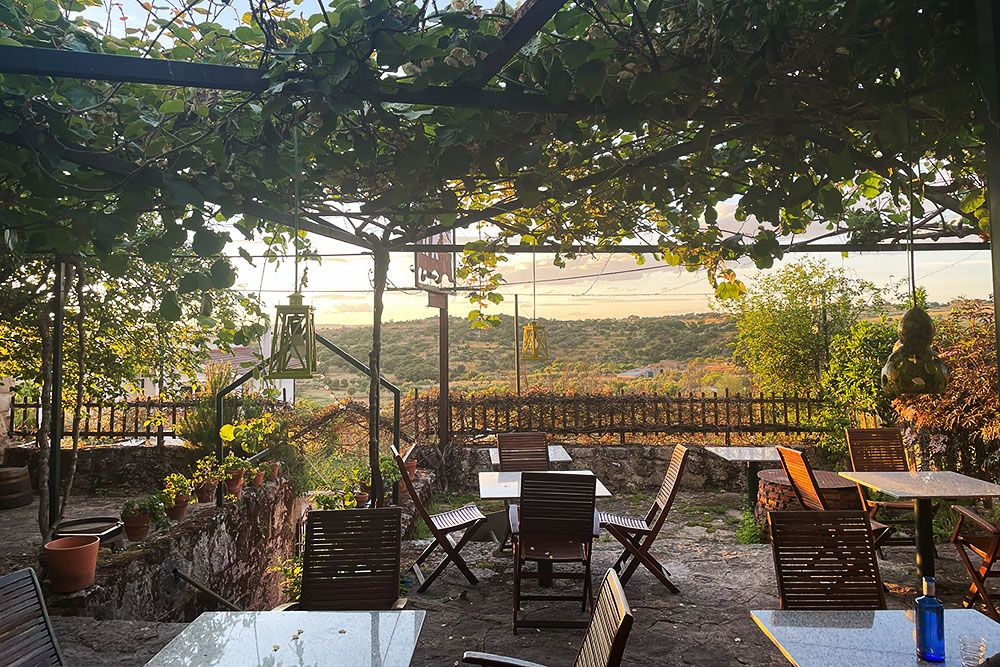
There are several excellent accommodation options along the wine routes in the province of Zamora. Here are some recommendations.
In Toro:
- Palacio Rejadorada. Housed in a historic building, Palacio Rejadorada offers elegant rooms with modern amenities. The hotel combines historical charm with comfort and has a restaurant serving local dishes.
- Near Casa Rural Marialba lies the particularly beautiful castle of Monte la Reina. This historic castle offers a unique stay experience combining luxury and tradition. The grounds also include a bodega that produces excellent wines and offers tours and tastings. The vineyards surrounding the castle contribute to the serene and picturesque environment.
- Other accommodations in Toro.
In Zamora:
- Parador de Zamora, located in a 15th-century castle in the historic centre of Zamora. This hotel offers luxurious rooms, a restaurant serving traditional Castilian dishes, and an outdoor swimming pool.
- Casa Dora Duero. Offers views of the city and is close to important sights such as the Cathedral of Zamora.
- Other accommodations in Zamora.
In Fermoselle:
- Hotel Doña Urraca, located on the outskirts of Fermoselle. This hotel offers, to our taste, somewhat old-fashioned but spacious rooms with air conditioning, a decent restaurant serving local specialities, and an outdoor swimming pool with panoramic views over the Duero valley. We spent two nights here. We found the breakfast buffet meagre, but the hotel itself was fine as a base for excursions in the immediate vicinity.
- Other accommodation in Fermoselle.
Other recommendations outside Toro, Zamora and Fermoselle:
- Posada Real Castillo del Buen Amor, located in a beautifully restored 15th-century castle between Zamora and Salamanca. This unique hotel offers elegant rooms with a medieval atmosphere, a gourmet restaurant serving regional specialities, and extensive gardens with an outdoor swimming pool. The castle also has its own vineyard and bodega. We spent a night here and were truly delighted with the accommodation. However, we were less impressed with the bodega's own wines.
- Bodegas Valbusenda, a unique wine tourism complex that includes not only a winery but also a 5-star hotel and spa. It offers visitors the opportunity to be fully immersed in the world of wine. The location on the banks of the Duero River makes it extra special.
- Agritourism: In rural areas, you'll find farms offering accommodation. These provide a unique and rustic experience, often with homemade products and sometimes even their own wines. An example is Casa Rural Marialba, where we also spent a night. This rural accommodation offers spacious rooms and a beautiful garden. Ideal for travellers who want to enjoy the tranquillity of the countryside and the authentic atmosphere of the region. Another example is the idyllic La Casa de los Arribes in Fornillos de Fermoselle.
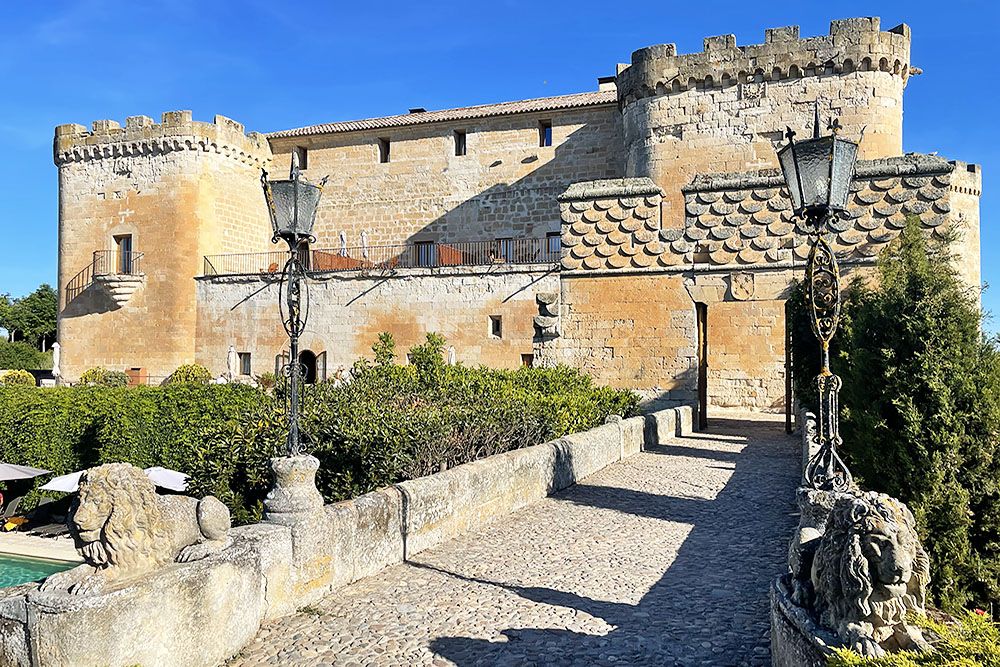
Here are some recommended wineries to visit during your wine trip in the province of Zamora. The mentioned wineries offer various experiences, from tours and tastings to vineyard visits and gastronomic options. It's advisable to book in advance for visits and tastings.
On the Toro wine route:
- Pagos del Rey: A modern winery with a museum and educational garden, combining innovation with respect for local traditions
- Bodega Fariña: Pioneer in the Toro region, known for their quality wines from the Tinta de Toro grape
- Bodega Numanthia: Known for their premium wines and modern winemaking techniques.
- Bodega Pintia (Vega Sicilia): A prestigious winery that combines Toro tradition with innovation.
- Bodega Rejadorada: Located in a 14th-century palace in the centre of Toro.
On the Zamora wine route:
- Viñas del Cenit: Specialises in wines from old vines in the Zamora region.
- Viña Ver: A boutique winery focusing on the production of exclusive, handcrafted wines.
- Bodegas Senorio de Bocos: Known for their Verdejo wines, a typical grape variety for this region.
- Bodegas Cooperative El Soto: This cooperative produces, among others, the 'Proclama' Malvasia, an interesting white wine for lovers of this grape variety.
On the Arribes wine route:
- Bodega El Hato y el Garabato: A particularly passionate family business dedicated to making natural wines with minimal intervention
- Bodega Ribera de Pelazas: A family business that combines traditional methods with modern technology
- Bodegas Arribes del Duero: Known for their ecological wines
- Hacienda Zorita Natural Reserve: A wine and nature resort that offers a complete Arribes experience
We followed the wine routes in Zamora at the invitation of the Spanish Tourist Board. We have independently and objectively compiled the content of this blog based on our own impressions.

